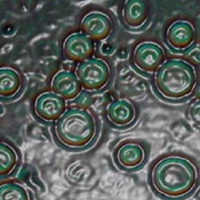Different behaviour between autotrophic and heterotrophic Galdieria sulphuraria (Rhodophyta) cells to nitrogen starvation and restoration. Impact on pigment and free amino acid contents

Accepted: 3 June 2020
All claims expressed in this article are solely those of the authors and do not necessarily represent those of their affiliated organizations, or those of the publisher, the editors and the reviewers. Any product that may be evaluated in this article or claim that may be made by its manufacturer is not guaranteed or endorsed by the publisher.
The unicellular red alga Galdieria sulphuraria is a polyextremophilic organism with a metabolic flexibility to grow autotrophically or heterotrophically. Galdieria can also produce and accumulate biotechnologically attractive products such as pigments (phycocyanin) and proteins. In this research we studied the effects of nitrogen starvation and its subsequent restoration on pigment and free amino acid contents both in photoautotrophic and heterotrophic cells. Following the nitrogen starvation, the levels of the primary photosynthetic pigments decreased both in autotrophic and heterotrophic cells, except for the chlorophyll a marginally diminished in heterotrophic cells. Ammonium supply to G. sulphuraria N starved cells caused a significant increase of total chlorophylls both in autotrophic and heterotrophic cells. It was observed how such increase was more rapid and marked in heterotrophic cells than in the autotrophic ones. Under N starvation, phycocyanin contents decreased in both autotrophic and in heterotrophic cells; however, after a time-lapse of 24 hours, they resulted significantly higher in heterotrophic cells. In Galdieria sulphuraria, like in other microalgae, free amino acid contents were profoundly dependent on nitrogen status of the cells but heterotrophic cells maintained much higher levels, especially of glutamate, respect to autotrophic ones. In general, cells grown in the presence and absence of light showed different responses toward N availability; in particular heterotrophic cells seemed to respond quicker to the ammonium restoration compared to autotrophic ones.
PAGEPress has chosen to apply the Creative Commons Attribution NonCommercial 4.0 International License (CC BY-NC 4.0) to all manuscripts to be published.


 https://doi.org/10.4081/pb.2020.8567
https://doi.org/10.4081/pb.2020.8567



